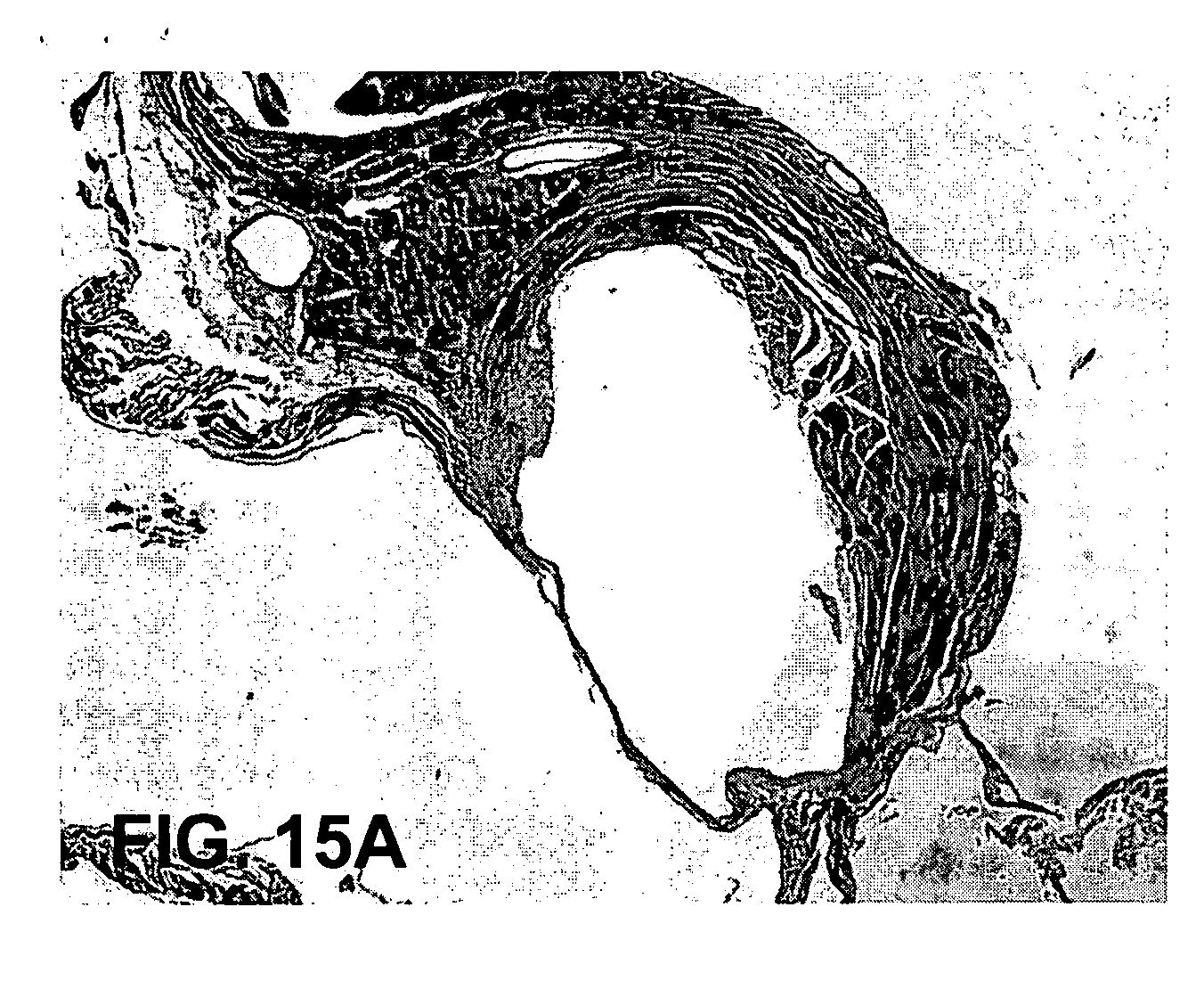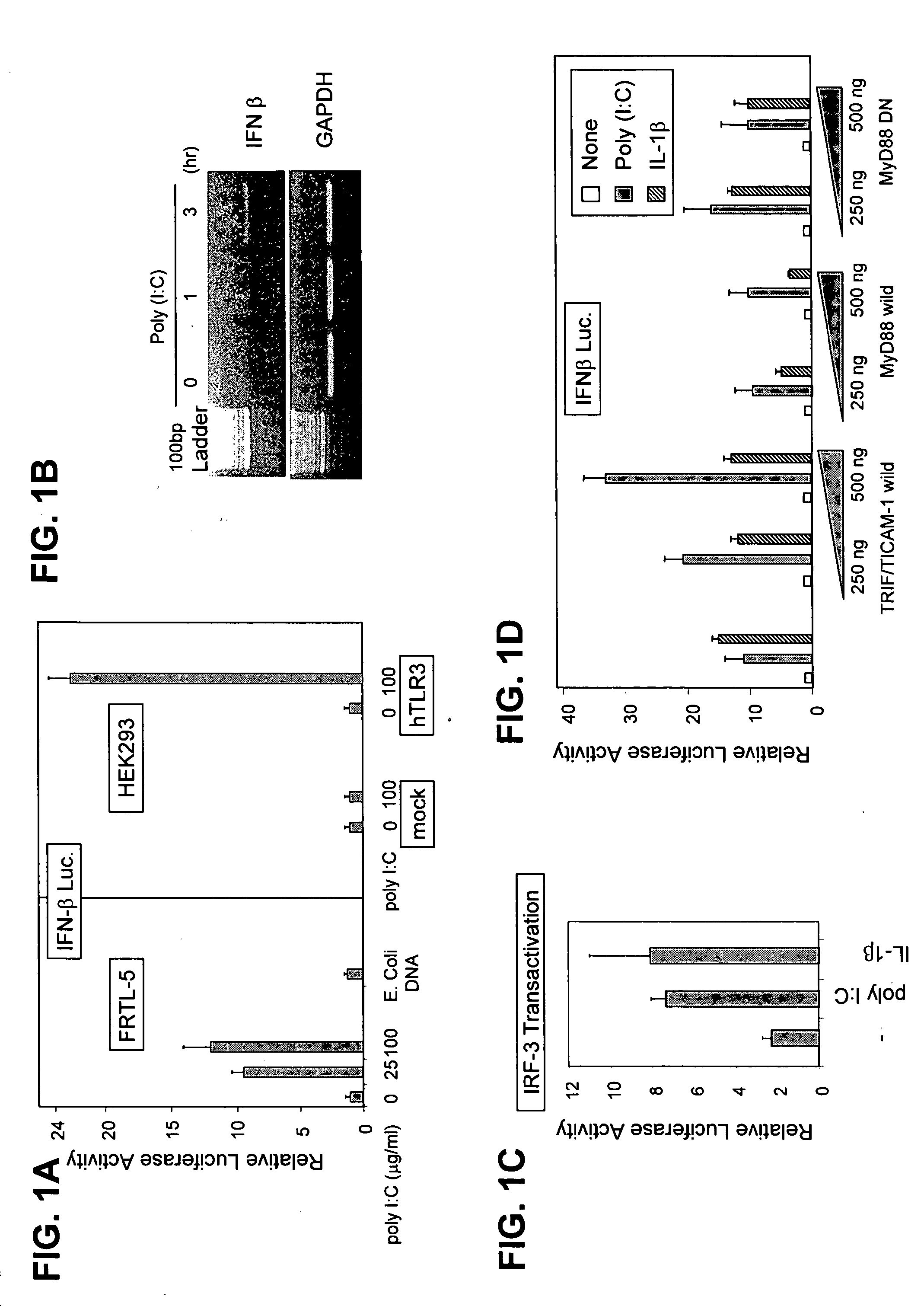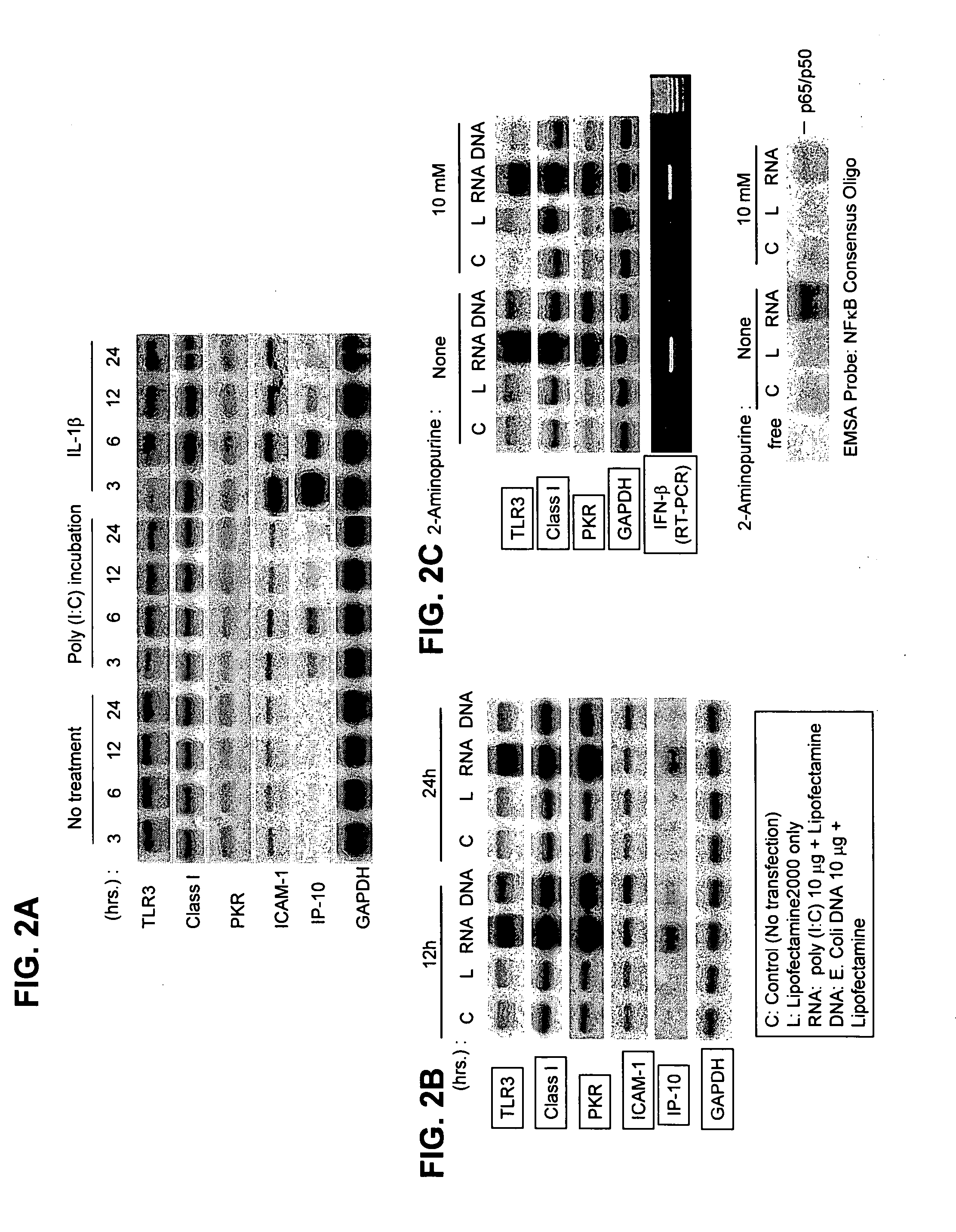Use of phenylmethimazoles, methimazole derivatives, and tautomeric cyclic thiones for the treatment of autoimmune/inflammatory diseases associated with toll-like receptor overexpression
a technology of toll-like receptor and tautomeric cyclic thione, which is applied in the field of autoimmune/inflammatory diseases, can solve the problems of abrogation of immunostimulatory activity, suspicion of lps contamination, and poorly defined susceptibilities, so as to improve the selective biological properties, increase the oral availability, and enhance the effect of biological penetration
- Summary
- Abstract
- Description
- Claims
- Application Information
AI Technical Summary
Benefits of technology
Problems solved by technology
Method used
Image
Examples
example 1
[0356]TLR3 is expressed in thyrocytes, is functional, can be pathologically overexpressed by viruses, is associated with Hashimoto's thyroiditis, and its pathological overexpressed state or signaling can be reversed by methimazole, methimazole derivatives, and tautomeric cyclic thiones.
[0357]TLR3 is present and functional in thyrocytes.
[0358]TLR3 is present in thyrocytes. Using Northern blotting, we showed that rat FRTL-5 thyrocytes contained detectable levels of a single 5.8 kb mRNA that hybridizes with a 32P-labeled mouse TLR3 cDNA probe and is present in mouse spleen (positive control). The presence of TLR3 on FRTL-5 thyrocytes grown in continuous culture was duplicated in intact mouse thyroids, which had a similarly sized RNA. Specificity was indicated since neither human embryonic kidney (HEK293), Chinese hamster ovary (CHO-KI) cell, or mouse liver exhibited significant levels of a similar sized hybridizing band. Further evidence of specificity was the observation that TLR9 mRN...
example 2
[0411]Phenylmethimazole (C10) protects mice from TLR3 mediated Type 1 diabetes and improves survival.
[0412]In Example 1 we show that TLR3 and IFN-β protein are expressed in situ in thyrocytes from patients with Hashimoto's thyroiditis which are surrounded by immune cells but not in thyrocytes from normal individuals or Graves' autoimmune hyperthyroidism, a novel finding never previously demonstrated. The results from human thyrocytes in culture indicate that TLR3 activation and functional increases in signaling can occur in human as well as rat thyrocytes in culture and this can occur in the absence of lymphocytes or a lymphocyte-produced IFN, since lymphocytes primarily produce type II interferon (T. Taniguchi, et al., Annu Rev Immunol, 19:623-55 (2001)). Consistent with this, the immunocytochemistry study shows that the intense brown stain for IFN-β is localized in the thyrocytes and is not significant in the immune cells. The results thus raise the possibility that thyrocytes are...
example 3
Phenyl Methimazole Protects Mice from LPS-Induced Endotoxic Shock Mediated by TLR4 Signals and Improves Survival
[0422]The LPS that causes endotoxic shock binds to TLR-4 receptors on nonimmune cells, monocytes, macrophages, and dendritic cells, then activates two signal pathways, (S. Sato, et al., Int Immunol, 14:783-91 (2002)), MyD88-dependent (M. Yamamoto, et al., J Immunol, 169:6668-72 (2002); T. Ogawa, et al., Int Immunol, 14:1325-32 (2002); K. Ruckdeschel, et al., J Immunol, 168:4601-11 (2002)) and MyD88-independent (M. Yamamoto, et al., Nature, 430:218-22 (2004)) Both pathways contribute to the fatal consequences of the syndrome. The MyD88-dependent pathway activate the NF-κB signal and MAP Kinase signal systems. After phosphorylation and degradation of IκB and after the release of the p50 and p65 subunits from IκB, p50 and p60 enter the nucleus to interact with a multiplicity of gene promoters, causing the synthesis and secretion of proinflammatory cytokines TNF-α, IL-1, IL-6,...
PUM
| Property | Measurement | Unit |
|---|---|---|
| time | aaaaa | aaaaa |
| time | aaaaa | aaaaa |
| body weight | aaaaa | aaaaa |
Abstract
Description
Claims
Application Information
 Login to View More
Login to View More - R&D
- Intellectual Property
- Life Sciences
- Materials
- Tech Scout
- Unparalleled Data Quality
- Higher Quality Content
- 60% Fewer Hallucinations
Browse by: Latest US Patents, China's latest patents, Technical Efficacy Thesaurus, Application Domain, Technology Topic, Popular Technical Reports.
© 2025 PatSnap. All rights reserved.Legal|Privacy policy|Modern Slavery Act Transparency Statement|Sitemap|About US| Contact US: help@patsnap.com



